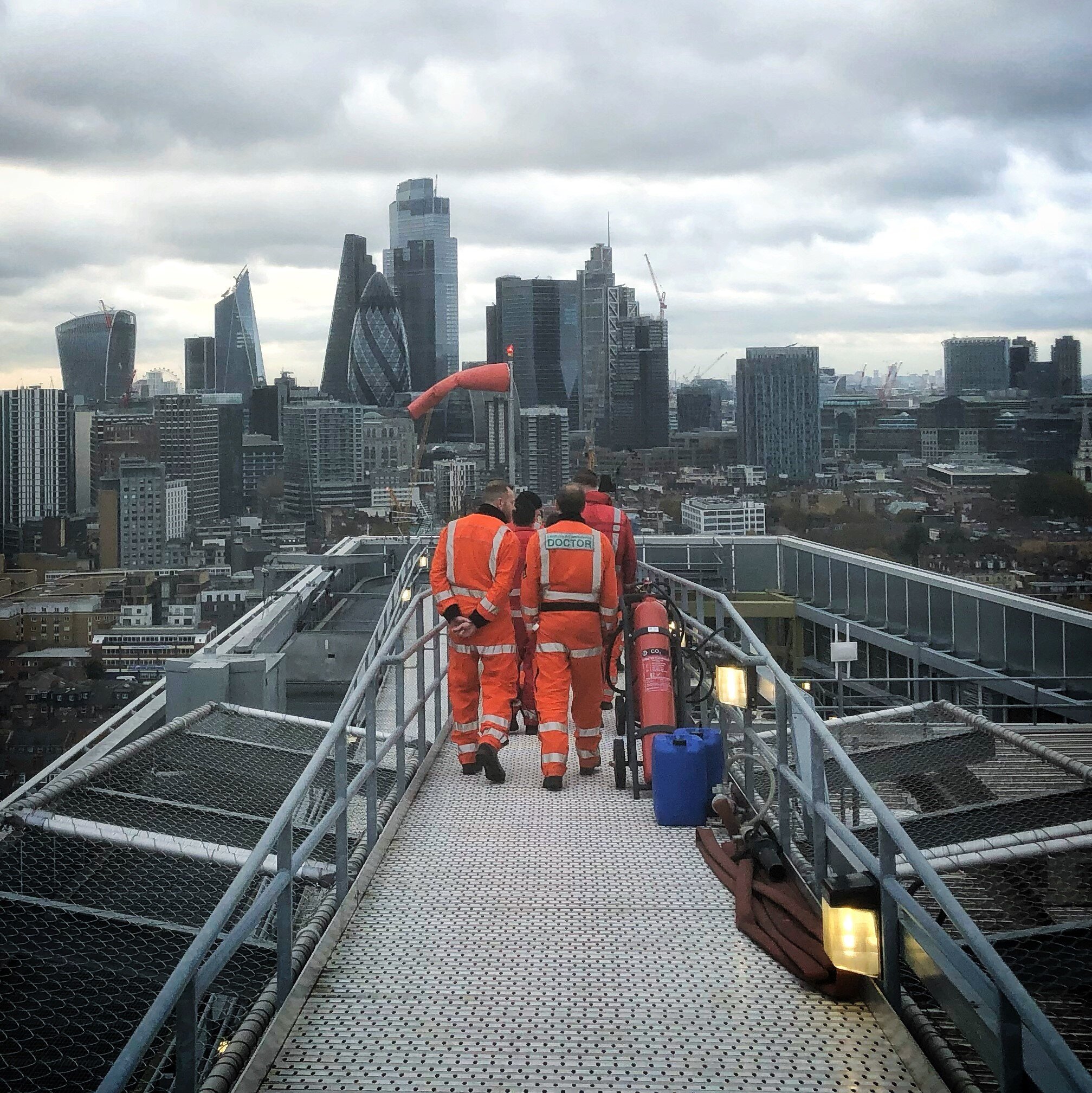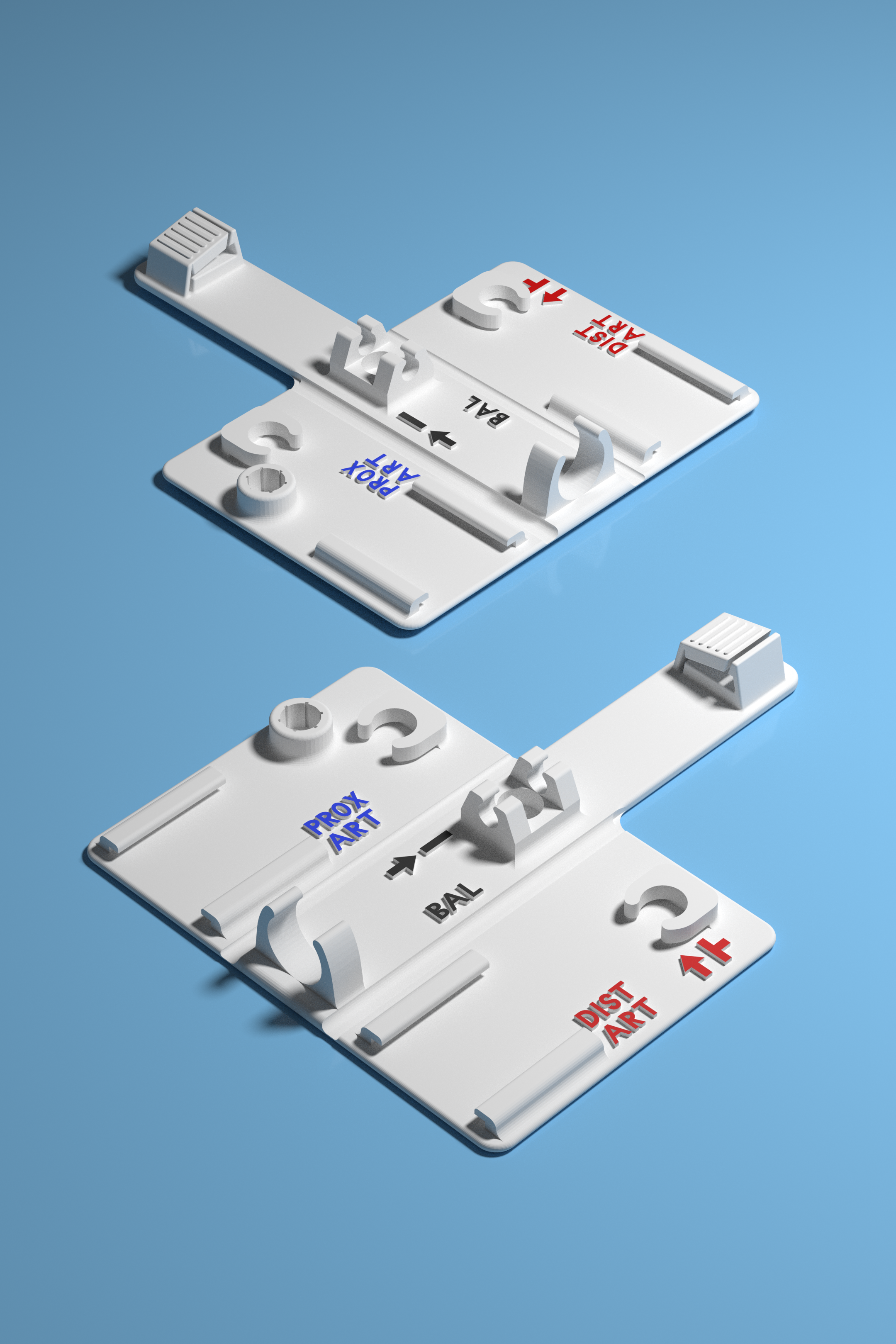
REBOAid Device
The Royal London Hospital
Medical Device Design
This project was developed in collaboration with the London Air Ambulance (LAA) paramedic team at The Royal London Hospital. The project concerns the REBOA (Resuscitative Endovascular Balloon Occlusion of the Aorta) procedure, a complex multi-stage method of preventing excessive blood loss from haemorrhages. Whilst traditionally performed in the operating theatre, The Royal London Hospital has pioneered REBOA for pre-hospital care as recently as 2014. This new context environment renders much of the REBOA equipment unsuitable for use. The device makes existing equipment fit for purpose, replacing current practices with a user-centred design-led solution to aid the paramedics in the procedure. To design an effective, user-centred product, this project would call on my knowledge of interaction design, requiring extensive prototyping and testing to achieve maximum usability in the intricate medical context.
Skill development:
Design Process, User Centred Design, Interaction Design, User Research, Prototyping, Usability Testing, Design for Manufacture, Client Relationships, Presentation, Report Writing

“Design a solution reducing cognitive load and stress by making REBOA equipment more fit-for-purpose in the pre-hospital use environment”

Complex medical use environments require strict user-centred design.
To design for the intricate and varied medical context, designers must have comprehensive knowledge of the use environment, use cycle and end users. Medical device design demands close and continuous contact with medical professionals to produce effective, usable products.
The LAA team granted me exclusive access to moulage and scenario training days to observe how paramedics perform pre-hospital care. Conversing with paramedics identified opportunities and highlighted the intricacies involved in medical procedures. A further course in Pre-hospital and Emergency Endovascular Resuscitation (PEER) was an opportunity to gain mentorship from medical device suppliers and learn about the industry. Product analysis of existing medical devices highlighted the importance of user-centred design to maximise usability, efficiency and safety. The key takeaway from research was the need to reduce cognitive load to ensure the procedure was successful in high-stress situations. A framework using interaction design principles was used to inform design decisions focused on making operable equipment intuitive, visible and centralised.
Specification & brief Refinement
From ideation to prototyping, the project emphasised the non-linear nature of the design process. Brief refinement was required, based on new information from studies and exploration of initial ideas for their feasibility and usability. The requirements are centred around three main characteristics of medical design outlined by the FDA, including usability, efficiency and safety. AAMI standards suggest medical device users find usability in particular to be the most important.
Efficiency
Provide clear directions
Quick to set up
Centralise equipment
Utilise current equipment
Usability
Easy to use
Require minimal training
Function in all conditions
Durable
Compact and portable
Safety
Reduce cognitive load and stress
Sterilisable
Account for human error
Amend current unsafe practices
User, front and centre.
Development followed a non-linear iterative approach involving the end user at every stage. In each iteration cycle, I would observe, converse, deliberate, evaluate, fail, and observe again. It was important to embrace failures and let actionable data drive decision-making.
Ethnographic testing was a vital tool as the solution is abstract, given the complexity of the use environment. Testing with the user revealed the myriad of use cases and addressed unexpected errors, emphasising the need to make the product easy to use.
Distributed Cognition Analysis allowed me to design the product around the use environment. Analysing the connections between multiple components in the system, such as equipment and users, determined where cognitive load could be reduced. This informed decisions such as adding implicit and explicit directional cues, including colour-coded text, arrows and icons.











